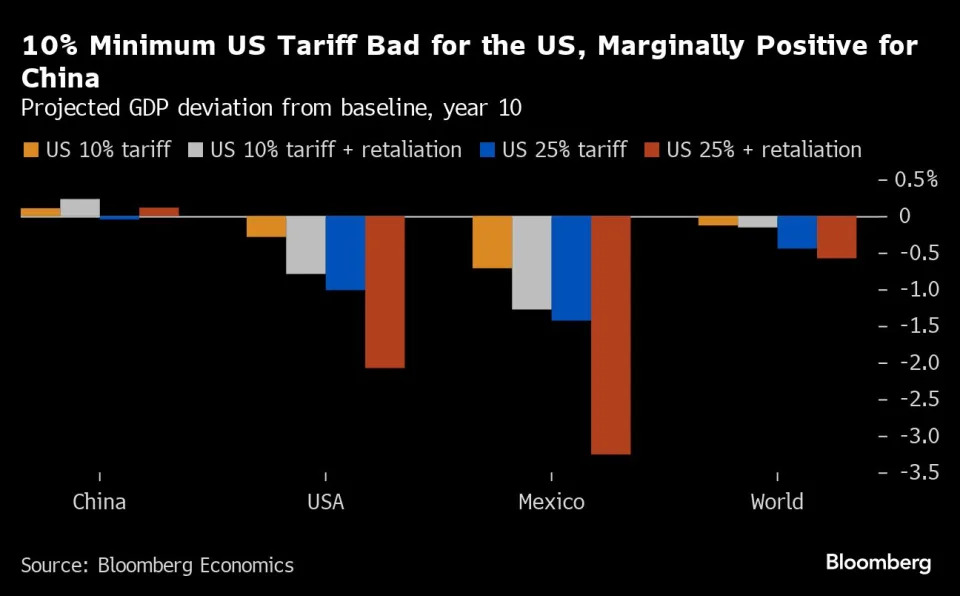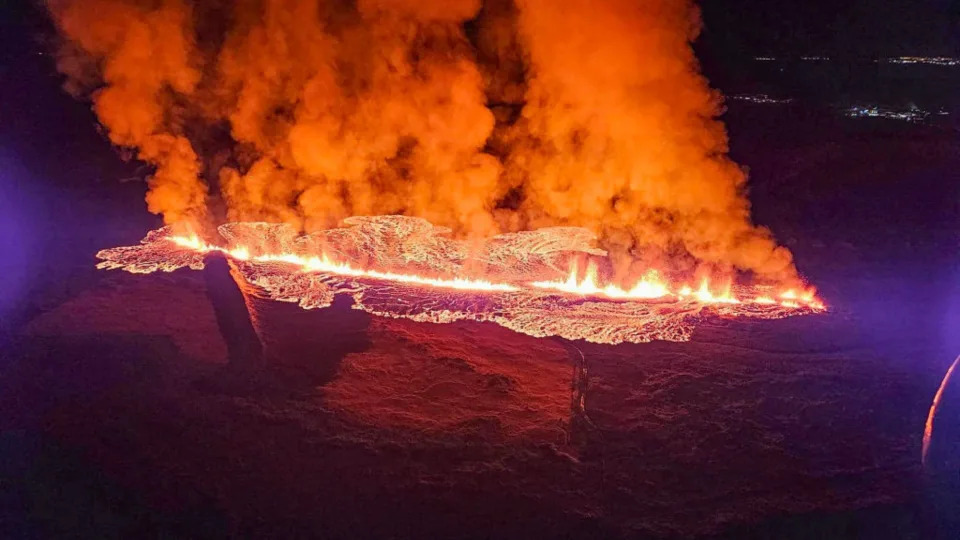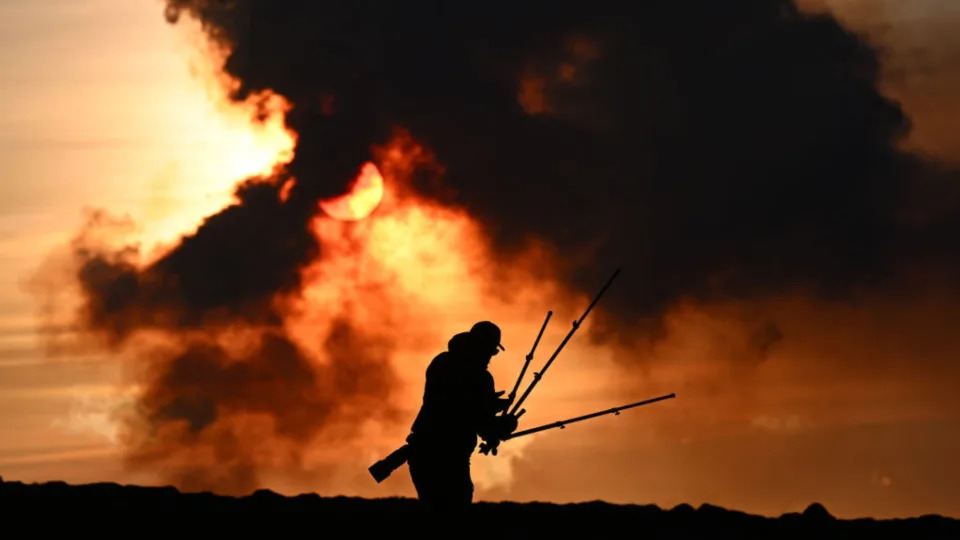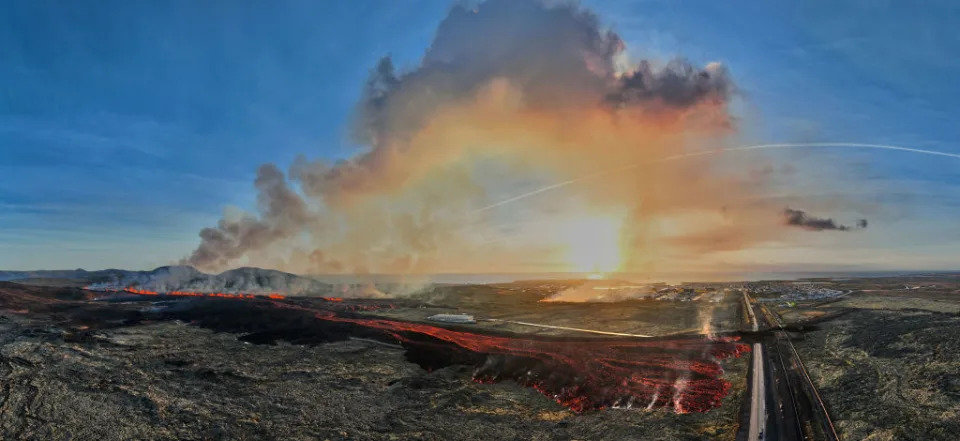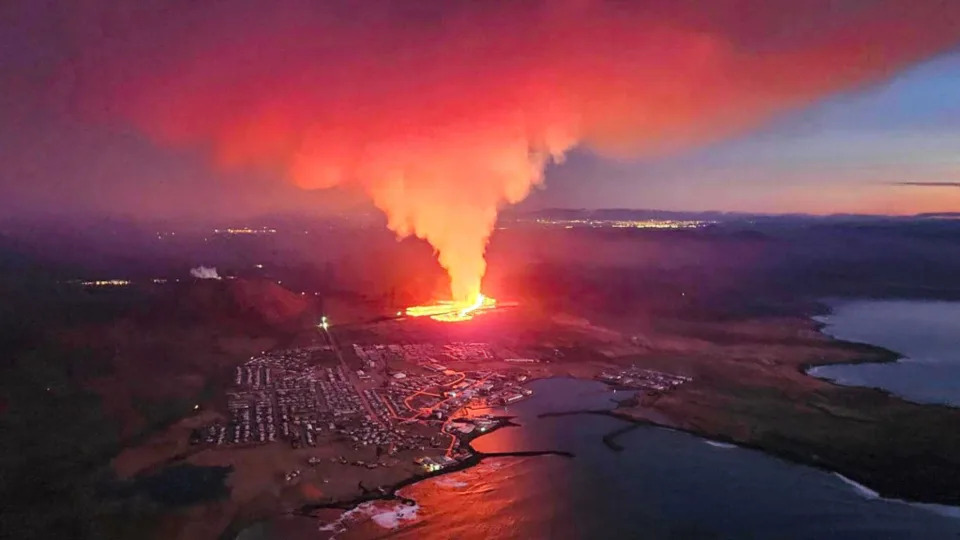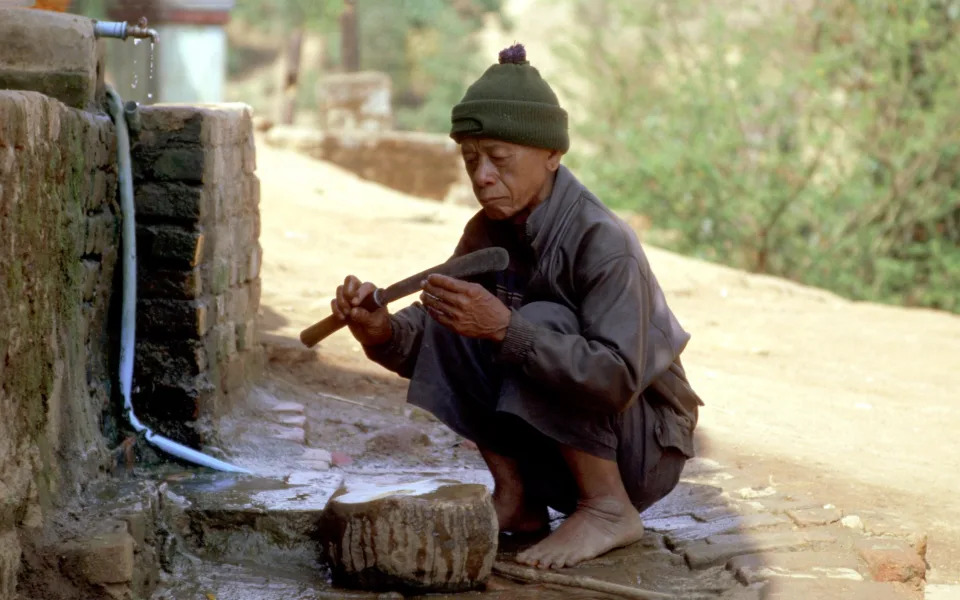DPA
Tue, January 16, 2024
Following former US president Donald Trump's victory in the first Republican primary, German politicians have called on the government to prepare for the possibility of another Trump term in office.
"The German government can no longer ignore domestic political developments in the United States. The US is too important a partner for that," Jürgen Hardt, a senior lawmaker from the conservative CDU/CSU opposition bloc, told dpa on Tuesday.
Although many Iowa Republicans did not vote for Trump, Hardt said it is nonetheless "high time to prepare for a president Trump."
Trump's bellicose rhetoric during his first term in office and open scepticism about US foreign commitments such as the NATO alliance caused great concern in Germany and throughout much of Europe.
The prospect of another four years of Trump could have serious implications for Europe, especially if Trump were to reduce US aid for Ukraine.
CDU foreign policy expert Norbert Röttgen told the Tagesspiegel newspaper that Germany and the EU must prepare for Trump by ramping up their arms production "so that Ukraine can defend itself against a Russian attack even without US help."
"Europe's freedom depends on this," Röttgen said.
Agnieszka Brugger, vice-chairwoman of the Green Party, said a more radical US policy under Trump would have negative consequences for international security, solidarity and respect for international law.
The current debate in the US Congress on further military aid for Ukraine shows how dangerous isolationism in large parts of the Republican Party is for European security, Brugger said in a statement.
A Wary World Braces for Trump’s Return to the White House
(Bloomberg) -- When Estonia’s much-fêted prime minister, Kaja Kallas, went to Washington in November, she didn’t just meet with White House officials. She also made sure to talk to key allies of Donald Trump.
A month earlier, her foreign minister was in the heart of Trump country, thanking workers at a Lockheed Martin Corp. factory in Arkansas for their contribution to his country’s security — in the form of the HIMARS multiple rocket launchers made there. “It’s important that we take these messages not only to Washington but also to other part of American society, to states that are perhaps a little more conservative,” Margus Tsahkna told reporters.
The outreach is just one example of how countries around the world are delicately — but urgently — preparing for Trump’s possible return to the White House. It’s a reality that’s likely to resonate at this week’s meetings of the global elite in Davos after the former president’s convincing win in the Iowa caucuses further tightened his grip on the Republican nomination, setting up a probable rematch with Joe Biden, who lags in national polls.
Back in 2016, Trump’s election stunned US allies and rivals alike. This time, leaders aren’t taking any chances.
Residents of Washington’s Embassy Row have been scouring the city to meet ex-officials and anyone else close to the former president to get a read on his foreign policy plans. Some have even reached out directly to Trump, massaging his ego, or in Estonia’s case, seeking to head off his habitual complaint that Europe isn’t spending enough on defense.
Others are sounding the alarm publicly. “It is clearly a threat,” European Central Bank President Christine Lagarde told French TV last week, citing the lessons of Trump’s first term.
Few in power are so open. But interviews with government officials from Europe to Asia, Africa and Latin America lay bare their concerns — in some cases, their hopes — about the impact of a Trump reprise, for security, trade, and climate action, and the balance of global power. Most asked not to be named discussing what’s nominally an internal US matter, with the campaign only now picking up and predicted to be tight.
Fears, Hopes
Many US allies are concerned about Trump’s America First rhetoric and threats to pull out of NATO, not to mention his protectionist trade policies. At European Union summits, some leaders are scared to even mention the prospect of his return for fear of making it more likely, one senior diplomat said.
With Vladimir Putin’s invasion of Ukraine heading into its third year, 2024 could be a tipping point for Europe’s security, said a Baltic official. In the Middle East, Trump’s unquestioning embrace of Israel has some EU diplomats worried the Gaza war might worsen, fueling a new wave of refugees heading for Europe.
But some nations of the Global South see opportunities in the former president’s more transactional approach.
Indian Prime Minister Narendra Modi enjoyed a personal rapport with Trump and his government preferred the previous administration to Biden’s, which has lectured New Delhi on human rights even as it has sought to enlist its support against China, according to officials. Their fondest hope: Trump picks Indian-American Vivek Ramaswamy as his running mate.
Brazil, which assumed the Group of 20 presidency from India, sees President Luiz Inacio Lula da Silva’s G-20 plans for climate action, poverty reduction and reform of the International Monetary Fund as vulnerable to a resurgent Trump.
Italy’s agenda for its G-7 presidency is similarly affected by the specter of his return. Prime Minister Giorgia Meloni also faces a personal and political dilemma, having cheered on Trump while in opposition at an event in Washington in 2019, but in office cultivating a close relationship with Biden.
Perhaps counter-intuitively, the view from Beijing is one of little change in the fundamental trajectory of China-US relations. Wang Yiwei, director of Renmin University’s Institute of International Affairs, noted that tariffs levied during the Trump presidency remain in place, and despite positive signals from last year’s presidential meeting, what he called the US containment of China hasn’t changed, bringing “real harm.”
Trade Worries
In fact, China’s economy would benefit modestly from one of Trump’s signature initiatives, the imposition of 10% across-the-board tariffs on imports and the likely retaliation it would bring, according to estimates by Bloomberg Economics. US growth and employment would slow. Canada and especially Mexico, fellow signatories of the USMCA trade deal, would suffer disproportionately.
Read more from Bloomberg Economics on the terminal.
Canada’s business community sees the USMCA as an existential issue – and it’s due for a joint review in 2026. Still, as a veteran of Trump’s first term, Prime Minister Justin Trudeau took care to stay on good terms with him in public while his senior aides forged relationships with Trump’s staff behind the scenes. That gives his team some confidence they can “stick-handle” another Trump presidency, though no one pretends it would be easy.
Mexican officials are having conversations with all camps including people in Trump’s orbit, and see their successful dealings with Trump before on complex topics like trade and migration as giving them confidence they can wrangle him again. What’s more, even though June elections mean a new Mexican president is due to take office in October, a singular focus in Washington on migration at the southern US border is likely to be something of a relief after the Biden administration’s additional interest in democracy, human rights and the environment.
The EU, which engaged in tit-for-tat sanctions with the Trump administration over US tariffs on steel and aluminum, wants to “Trump proof” agreements with the US, though it’s not clear how successful those efforts will be. One senior EU diplomat — who put the chance of a Trump return at 50-50 — said there is a greater awareness of the bloc’s dependencies in energy and raw materials, and the need to address them. His possible return has come up several times at official meetings.
Defense, Security
Many of the most critical — and anxious — voices are to be heard in Europe, where governments are bracing for the potential impact of Trump 2.0 on Russian relations, the Ukraine war and the future of NATO.
Several European delegations have been shuttling to Washington to reach out to Trump’s representatives and to the Heritage Foundation that’s working on his policy platform. The aim is partly to sound out who might be part of his administration to get a better handle on what to expect and to convey the message that Europe is paying its way in defense terms.
Personal ties are seen as key — something former Japanese Prime Minister Shinzo Abe grasped from the outset, according to Ichiro Fujisaki, Japan’s ambassador to the US from 2008-2012.
“Abe-san’s way was to play golf and have a lot of time together,” he said. “But then try not to give in but to speak personally about what he needs and what he has done for Trump.”
Still, Trump demanded more money from Tokyo to pay toward the upkeep of US bases in Japan. It’s a return to that quid-pro-quo approach to US security guarantees that worries many governments the most.
Taking no risks, Sweden, Finland and Denmark signed defense cooperation agreements with Washington in December. Finland is buying 64 F-35A fighter jets from the US, and last month announced investments to double artillery shell production.
Chancellor Olaf Scholz of Germany, a favorite target of Trump’s in the past, has made no secret of his preference for Biden, and there is anxiety in Berlin over what a new Trump administration could bring. But Germany, too, is finally taking defense spending seriously, stepping up to help Ukraine militarily while deploying troops to the Baltic states. Scholz has said that Germany should be ready to step in if others — read the US — pare back aid for Kyiv.
Others in Europe worry that could come even before a change of administration, as Republican opposition has stalled US support this year.
Opportunities
Some sense a chance: France, which has consistently pushed for a more sovereign Europe in industrial and defense terms, is aware of the paradox that Trump Mark II may provide the best opportunity yet for Europe to overcome national reservations and come together.
The UK sees a possibility of restarting negotiations on a free trade deal with the US that was viewed by Conservatives as the prize of quitting the EU. Having made little progress under Biden, the prospects may be brighter under Brexit supporter Trump.
Trump is any case not much concerned by his European critics. “The last thing we’re really thinking about is a handful of people in Europe,” Chris LaCivita, a Trump senior adviser, said in a roundtable hosted by Bloomberg News in Des Moines, Iowa, when asked about Lagarde’s comments.
Trump enjoyed warm ties with Saudi Arabia, and his son-in-law Jared Kushner has retained and built on his business relations in the United Arab Emirates, including setting up a private company at Abu Dhabi Global Market late last year.
Trump’s temperament is in some ways more in tune with the UAE and other Gulf states, meaning there isn’t much that worries them about the prospect of his return. But the reality is they’re becoming used to volatility in US foreign policy and are moving to solve problems by themselves without relying on Washington.
Sheer unpredictability is an issue for all governments, though: Even Russia bemoans the inability to count on any long-term stable foreign policy strategy by Washington. With the war in Ukraine at a stalemate and likely to remain so this year, Russian eyes are on the US election.
There’s a general sense that things will go better for Putin and his entourage in 2024, with Trump’s re-election one of the main expectations, said a person familiar with the Kremlin’s thinking. Still, after uncontrolled enthusiasm over Trump’s election in 2016 quickly gave way to disappointment that he didn’t deliver more for Moscow, the view this time is cautious. Whatever happens, the person said, the Kremlin will enjoy the spectacle.
--With assistance from Ott Tammik, Milda Seputyte, Aaron Eglitis, Michael Nienaber, Ania Nussbaum, Samy Adghirni, Chiara Albanese, Jorge Valero, Natalia Drozdiak, Alex Wickham, Sudhi Ranjan Sen, Jing Li, Ilya Arkhipov, Henry Meyer, Jasmina Kuzmanovic, Andra Timu, Kati Pohjanpalo, Ewa Krukowska, Selcan Hacaoglu, Ben Bartenstein, Zainab Fattah, Isabel Reynolds, Brian Platt, Laura Dhillon Kane, Max de Haldevang, Simone Iglesias, Martha Viotti Beck, Katarina Hoije and Nancy Cook.
Bloomberg Businessweek
